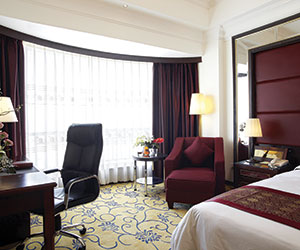 |
| Reviews and Templates for Expression We |
Are Your Occupants Sleep-Deprived?
How lighting affects alertness – and what you can do about it

Circadian Lighting helps users regulate melatonin, a sleep-inducing hormone that can be disrupted by exposure to blue lighting. Hospitality, healthcare, and office applications are prime candidates.
What color is your lighting? The answer may not be black and white.
Most lamps have some tint, whether it’s the light blue of LEDs or the warm yellow of incandescents. The color goes unseen by most people, including your occupants – but it could be affecting their alertness.
Eyes register subtle color shifts even when your occupants don’t consciously notice them. Research indicates that when the eyes are exposed to blue light, the production of melatonin – a sleep-inducing hormone – is suppressed. Unfortunately, blue light is common in many lamp types – not to mention the ubiquitous mobile devices that light up every time a text is received – so users are being bombarded with more blue light than ever before. Red light, in contrast, encourages melatonin production and a good night’s sleep.
“One of the challenges about eliminating blue light is that it’s the one color in the spectrum that doesn’t require a lot of power to be bright,” explains Cameron Postelwait, director of marketing for Sewell Direct, which developed an E27-style circadian lamp with a white LED called the Drift Light. “Many manufacturers have a motive to make their efficacy ratings high and say that customers will get a lot of lumens per watt with their bulb, but what they’re actually doing is letting more blue light through because that makes the light brighter without a lot more energy consumption.”
You won’t have to lose sleep over this problem, though. A growing number of vendors are creating specialized lighting to support the end user’s natural circadian rhythm throughout the day. Find the right model to offer your guests an extra amenity and set your organization apart.
Restore the Circadian Rhythm
Light’s impact on melatonin is a challenge tackled by no less than NASA, which realized that sleep-deprived astronauts are more likely to make mistakes or become irritable, depressed, or sick. These problems are amplified in the high-stakes environment of the International Space Station.
That’s why the organization decided in 2012 to replace all of the fluorescent bulbs on the space station with LEDs that switch between slight tints of blue, white, and red according to the time of day. This helps the astronauts regulate their circadian rhythms in space while they’re away from Earth’s natural 24-hour cycle. The agency hopes to swap in all of the new bulbs by 2016.
If space-age solutions aren’t feasible for your facility, the market offers a multitude of niche products engineered to encourage sleep or alertness with different strategies:
Bring the sunset inside: Products such as the Drift Light include an internal timer that slowly dims the light over 37 minutes, the average length of time the sun takes to set. Preston Wily, the CEO of Sewell Direct and lead developer on the Drift Light, was inspired to create a prototype by trying to get his 3-year-old daughter to sleep.
“One partner in hospitality explained that they were competing on the best night’s sleep,” explains Wily. “You’ve seen the wars throughout the years – hotels have traditionally competed on bedding and comfort. They thought circadian lighting was a small investment in addition to automation and bedding.”
Different tints for different times: For offices and other environments where alertness is key, consider a blue-tinted white lamp, perhaps in a task light. Biological support LEDs like the Awake & Alert and Good Night pair by Lighting Science use spectrum filters to let through more or less blue, respectively. Consider pairing a daytime and a nighttime bulb in a hotel room’s bedside lamp with signage explaining how the phenomenon works.
“The general public is still fairly uneducated about blue light and the sensors in the eyes that pick up on it,” says Postelwait. “We need to raise awareness about this problem.”
|
|
|
|
Copyright 2011 Energy and Technical Services Ltd. All Rights Reserved. Energyts.com |